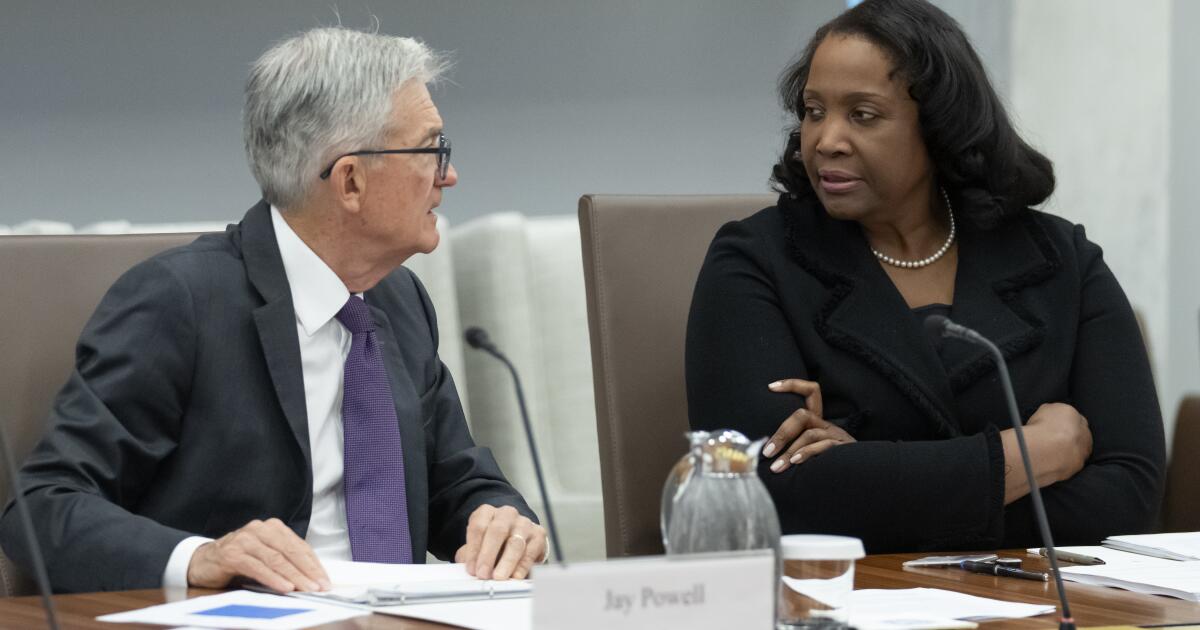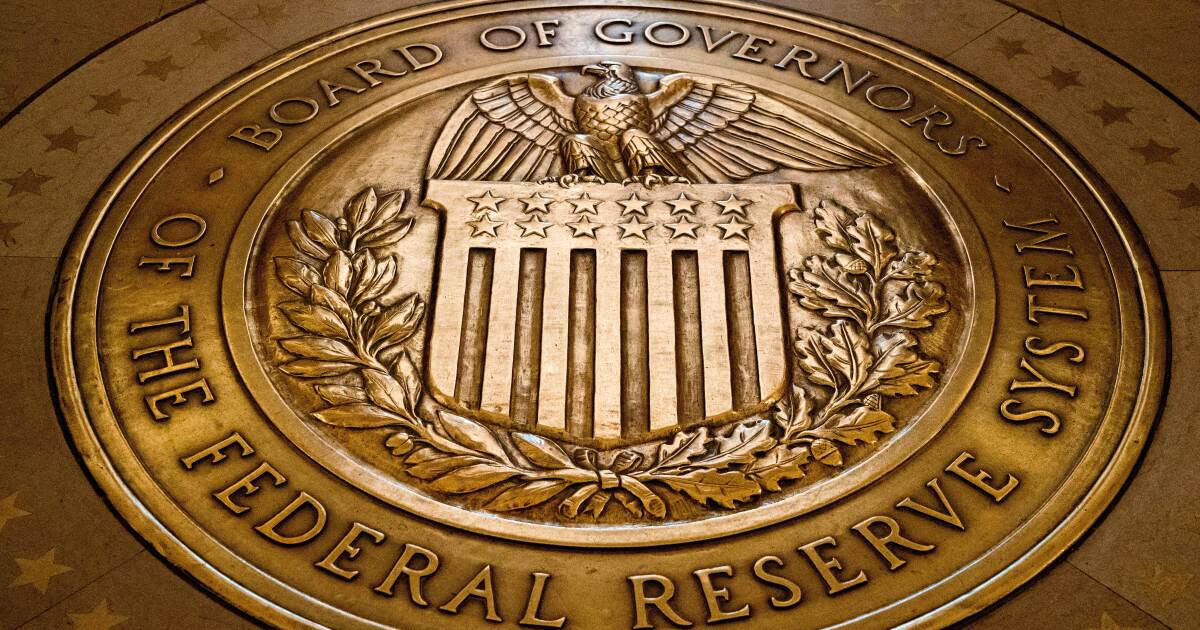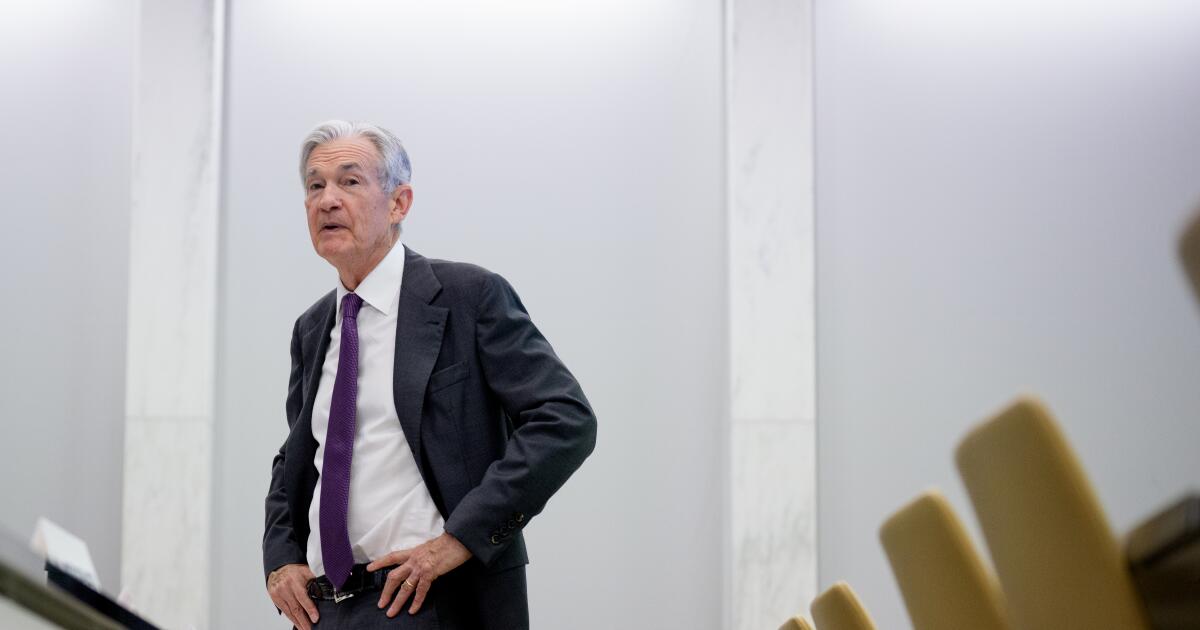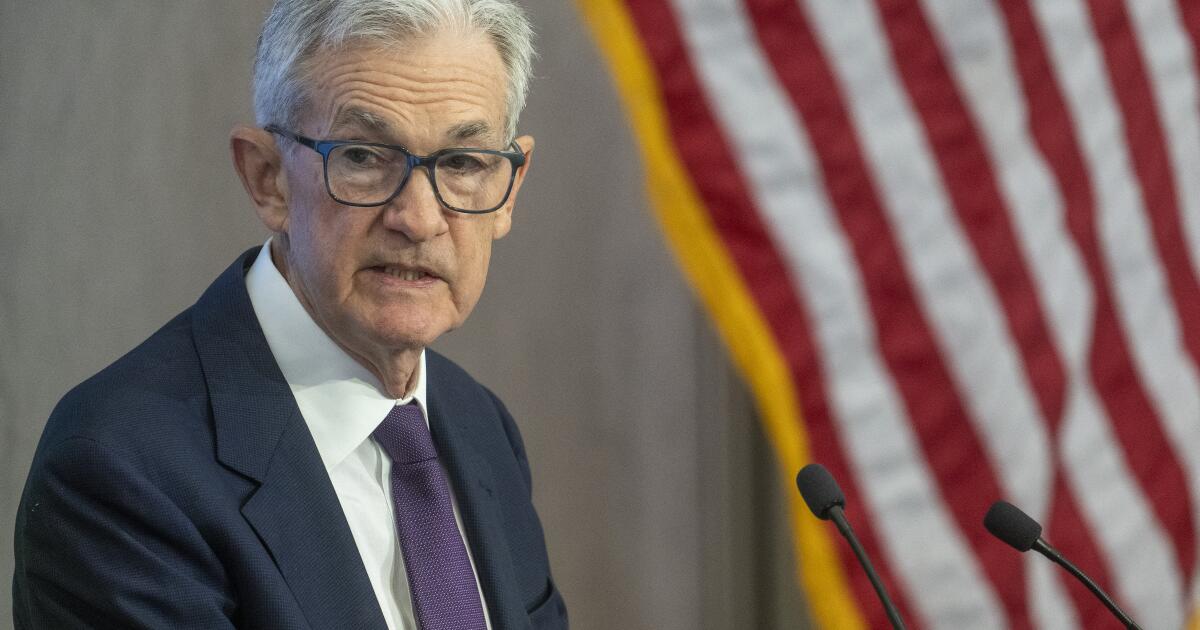WASHINGTON — President Trump’s attempt to fire a member of the Federal Reserve’s governing board has raised alarms among economists and legal experts who see it as the biggest threat to the central bank’s independence in decades.
The consequences could affect most Americans’ everyday lives: Economists worry that if Trump gets what he wants — a loyal Fed that sharply cuts short-term interest rates — the result would likely be higher inflation and, over time, higher borrowing costs for things like mortgages, car loans and business loans.
Trump on Monday sought to fire Lisa Cook, the first Black woman appointed to the Fed’s seven-member Board of Governors. It was the first time in the Fed’s 112-year history that a president has tried to fire a governor.
Fed independence ‘hangs by a thread’
Trump and members of his administration have made no secret about their desire to exert more control over the Fed. Trump has repeatedly demanded that the central bank cut its key rate to as low as 1.3%, from its current level of 4.3%.
Before trying to fire Cook, Trump repeatedly attacked the Fed’s chair, Jerome Powell, for not cutting the short-term interest rate and threatened to fire him as well.
“We’ll have a majority very shortly, so that’ll be good,” Trump said Tuesday, a reference to the fact that if he is able to replace Cook, his appointees will control the Fed’s board by a 4-3 vote.
“The particular case of Governor Cook is not as important as what this latest move shows about the escalation in the assaults on the Fed,” said Jon Faust, an economist at Johns Hopkins and former advisor to Powell. “In my view, Fed independence really now hangs by a thread.”
Some economists do think the Fed should cut more quickly, though virtually none agrees with Trump that it should do so by 3 percentage points. Powell has signaled the Fed is likely to cut by a quarter point in September.
Why economists prefer independent central banks
The Fed wields extensive power over the U.S. economy. By cutting the short-term interest rate it controls — which it typically does when the economy falters — the Fed can make borrowing cheaper and encourage more spending, growth and hiring. When it raises the rate to combat the higher prices that come with inflation, it can weaken the economy and cause job losses.
Most economists have long preferred independent central banks because they can take unpopular steps that elected officials are more likely to avoid. Economic research has shown that nations with independent central banks typically have lower inflation over time.
Elected officials like Trump, however, have much greater incentives to push for lower interest rates, which make it easier for Americans to buy homes and cars and would boost the economy in the short run.
A political Fed could boost inflation
Douglas Elmendorf, an economist at Harvard and former director of the nonpartisan Congressional Budget Office, said that Trump’s demand for the Fed to cut its key rate by 3 percentage points would overstimulate the economy, lifting consumer demand above what the economy can produce and boosting inflation — similar to what happened during the COVID-19 pandemic emergency.
“If the Federal Reserve falls under control of the president, then we’ll end up with higher inflation in this country probably for years to come,” Elmendorf said.
And while the Fed controls a short-term rate, financial markets determine longer-term borrowing costs for mortgages and other loans. And if investors worry that inflation will stay high, they will demand higher yields on government bonds, pushing up borrowing costs across the economy.
In Turkey, for example, President Recep Tayyip Erdogan forced the central bank to keep interest rates low in the early 2020s, even as inflation spiked to 85%. In 2023, Erdogan allowed the central bank more independence, which has helped bring down inflation, but short-term interest rates rose to 50% to fight inflation, and are still 46%.
Other U.S. presidents have badgered the Fed. President Johnson harassed then-Fed Chair William McChesney Martin in the mid-1960s to keep rates low as Johnson ramped up government spending on the Vietnam War and antipoverty programs. And President Nixon pressured then-Chair Arthur Burns to avoid rate hikes in the run-up to the 1972 election. Both episodes are widely blamed for leading to the stubbornly high inflation of the 1960s and ‘70s.
Trump has also argued that the Fed should lower its rate to make it easier for the federal government to finance its tremendous $37-trillion debt load. Yet that threatens to distract the Fed from its congressional mandates of keeping inflation and unemployment low.
Independence vs. accountability
Presidents do have some influence over the Fed through their ability to appoint members of the board, subject to Senate approval. But the Fed was created to be insulated from short-term political pressures. Fed governors are appointed to staggered, 14-year terms to ensure that no single president can appoint too many.
Jane Manners, a law professor at Fordham University, said there is a reason that Congress decided to create independent agencies like the Fed: Lawmakers preferred “decisions that are made from a kind of objective, neutral vantage point grounded in expertise rather than decisions are that are wholly subject to political pressure.”
Yet some Trump administration officials say they want more democratic accountability at the Fed.
In an interview with USA Today, Vice President JD Vance said, “What people who are saying the president has no authority here are effectively saying is that seven economists and lawyers should be able to make an incredibly critical decision for the American people with no democratic input.”
Stephen Miran, a top White House economic advisor, wrote a paper last year advocating for a restructuring of the Fed, including making it much easier for a president to fire governors.
The “overall goal of this design is delivering the economic benefits” of an independent central bank, Miran wrote, “while maintaining a level of accountability that a democratic society must demand.” Trump has nominated Miran to the Fed’s board to replace Adriana Kugler, who stepped down unexpectedly Aug. 1.
There could be more turmoil ahead
Trump said he wants to oust Cook from the Board of Governors because of allegations raised by one of his advisors that she has committed mortgage fraud.
Cook has argued in a lawsuit seeking to block her firing that the claims are a pretext for Trump’s desire to assert more control over the Fed. A court may decide this week whether to temporarily block Cook’s firing while the case makes its way through the legal process.
Cook is accused of claiming two homes as primary residences in July 2021, before she joined the board, which could have led to a lower mortgage rate than if one had been classified as a second home or an investment property. She has suggested in her lawsuit that it may have been a clerical error but hasn’t directly responded to the accusations.
Trump also has personally insulted Powell for months, but his administration now appears much more focused on the Fed’s broader structure.
The Fed makes its interest rate decisions through a committee that consists of the seven governors, including Powell, as well as the 12 presidents of regional Fed banks in cities such as New York, Kansas City and Atlanta. Five of those presidents vote on rates at each meeting. The New York Fed president has a permanent vote, while four others vote on a rotating basis.
While the reserve banks’ boards choose their presidents, the Fed board in Washington can vote to reject them. All 12 presidents will need to be reappointed and approved by the board in February, which could become more contentious if the board votes down one or more of the 12 presidents.
Reappointing the reserve bank presidents and upending that structure would be “the nuclear scenario,” said Adam Posen, president of the Peterson Institute for International Economics.
That, he said, “would be the signal that things are truly going off the rails.”
Rugaber writes for the Associated Press.



